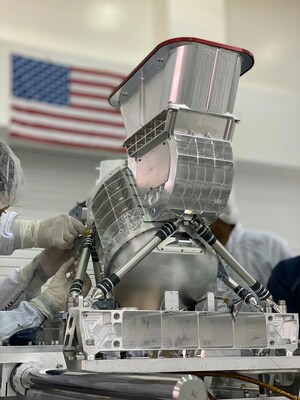VIAVI Solutions has supplied a precision order sorting filter for NASA’s Europa Clipper mission, enhancing the Mapping Imaging Spectrometer for Europa (MISE). This collaboration aims to analyze Jupiter’s moon Europa to assess its potential to support life.
VIAVI Delivers Precision Components for NASA’s Europa Clipper Mission

Key Takeaways:
- VIAVI Solutions provided a precision filter for NASA’s Europa Clipper mission’s MISE instrument.
- The MISE instrument will analyze Europa’s surface composition to determine its habitability.
- VIAVI’s filter enables high-resolution infrared data collection from 0.8 to 5 micrometers.
- The Europa Clipper mission launched on October 14, 2024, and will reach Jupiter in April 2030.
- VIAVI and NASA overcame technical challenges in developing the filter.
Introduction
NASA’s ambitious Europa Clipper mission, launched on October 14, 2024, has taken a significant leap forward thanks to the contributions of VIAVI Solutions. The company has supplied a precision order sorting filter that enhances the capabilities of the Mapping Imaging Spectrometer for Europa (MISE), a key instrument aboard the spacecraft. This collaboration seeks to unlock the secrets of Jupiter’s moon Europa and assess its potential to support life.
Exploring Europa’s Habitability
Europa, one of Jupiter’s icy moons, has long intrigued scientists due to the possibility of a subsurface ocean beneath its frozen surface. The Europa Clipper mission aims to conduct detailed reconnaissance of Europa, focusing on its surface composition. The MISE instrument, equipped with VIAVI’s precision filter, is designed to analyze the distribution of organics, salts, acid hydrates, and various phases of water ice. By mapping these elements, researchers hope to determine the moon’s habitability.
VIAVI’s Technological Contribution
VIAVI’s precision order sorting filter is critical to the optimal performance of MISE. The filter enables the spectrometer to capture high-resolution spectral data in the infrared range from 0.8 to 5 micrometers. This allows for detailed analysis of Europa’s surface materials. The filter combines three key technological capabilities: photolithographically-patterned bandpass filters, a Linear Variable Filter (LVF), and both optics assembled as a Butcher Block.
Overcoming Challenges Through Collaboration
Developing this unique filter presented several technical challenges. VIAVI and NASA collaborated closely to address issues such as the slope of the wavelength progression, co-planarity of the assembled optic, placement of the LVF center wavelengths relative to alignment fiducials, and operating in a challenging radiation environment. “We are honored to support NASA’s mission to explore one of the most intriguing moons in our solar system,” said Luke Scrivanich, Senior Vice President and General Manager, Optical Security and Performance at VIAVI. “Our team’s dedication to precision engineering has allowed us to meet the stringent requirements necessary for space exploration instruments like MISE.”
Mission Timeline and Future Exploration
Having launched in October 2024, the Europa Clipper is set to begin orbiting Jupiter in April 2030. Over its mission, it will fly past Europa 49 times, gathering invaluable data. The information collected by MISE and other instruments will provide deeper insights into Europa’s potential to support life and expand our understanding of the outer solar system.
Conclusion
VIAVI Solutions’ contribution to the Europa Clipper mission exemplifies the crucial role of technological innovation in space exploration. As the spacecraft journeys towards Jupiter, the collaborative efforts between VIAVI and NASA bring us closer to answering one of humanity’s most profound questions: are we alone in the universe?











